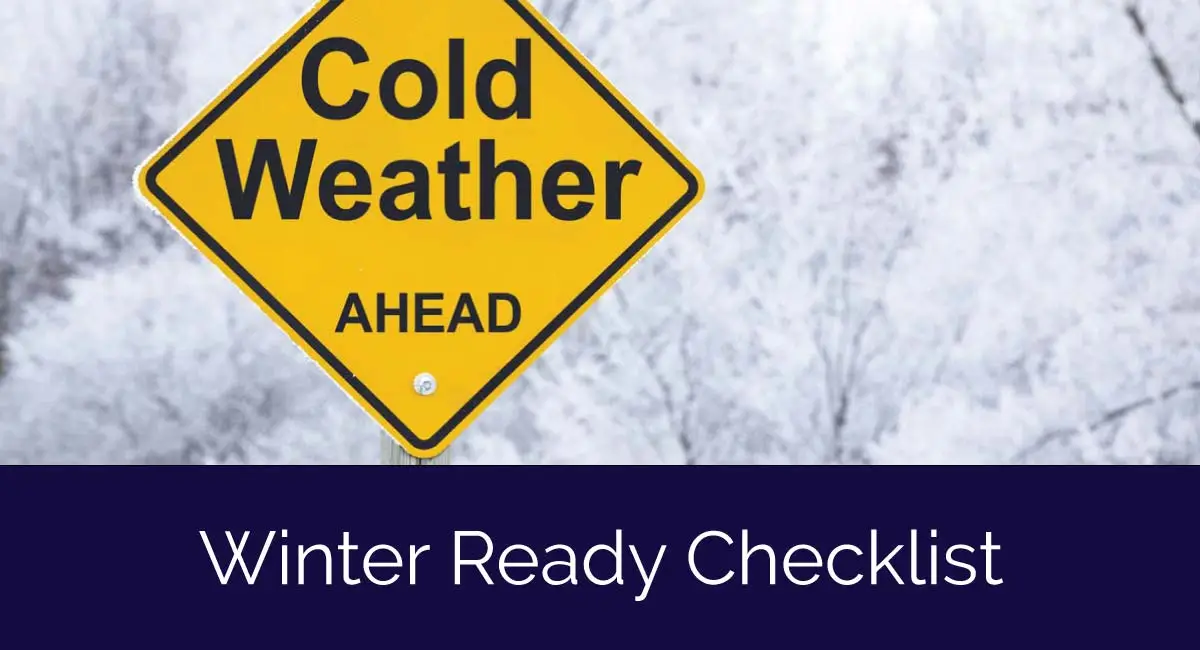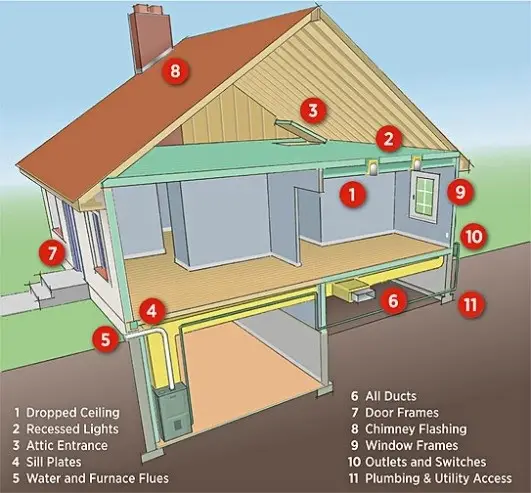
Everything you need to know about preparing your home for winter
Now that you’ve learned all about your home’s building envelope and the importance of making sure it’s properly insulated and sealed, run through this checklist to make sure your building envelope is sealed and you’re prepared for winter!
 (image credit: energy.gov)
(image credit: energy.gov)
Find the gaps in your building envelope
On a windy day, carefully hold a lit incense stick or a smoke pen next to your windows, doors, electrical boxes, plumbing fixtures, electrical outlets, ceiling fixtures, attic hatches, and other places where air could leak. If the smoke stream travels horizontally, you have located an air leak that may need caulking, sealing, or weatherstripping.
Click on the appropriate link if you would like additional details on checking out your roof, windows, and entry doors.
Caulk and seal the gaps
Prime spots for air leakage are where plumbing, ducting, or electrical wiring comes through walls, floors, ceilings, and soffits over cabinets. There are different kinds of caulk for different situations. To learn more about caulk types, we really like this article from Old House Journal.
Check outlets and switch plates
Make sure all of your outlets and switch plates are insulated with foam gaskets.
Check your insulation
Look for dirty spots in your insulation. These spots are the top places you might find air leaks and mold. If the leaks are minimal, you can try sealing them with low-expansion spray foam (again, you need to make sure you’re finding the right foam for your situation). If the leaks are significant, you may want to find a contractor to install house flashing, or contact us for a free Winter Ready Roof consultation to determine the health of your attic and roof.
Check your ceiling, paint and carpet
Once again, look for dirty spots. They may indicate air leaks at interior wall/ceiling joints and wall/floor joists. Inspect the caulking at these joints, if it’s cracked, or damaged, you should re-caulk to fortify your home’s building envelope seal!
Are you still using old storm windows?
Storm windows (aka “storms”) are not effective at protecting your home from harsh winter elements. Replace windows that require storms with energy efficient, double-pane, low-emission windows.
Check windows and baseboards, look for visible gaps in your home’s building envelope
If you can SEE gaps around your windows and baseboards, you want to seal them. For gaps around your windows that are less than the width of a nickel, seal them with caulk. If you think you have particularly drafty windows, walk through our winter ready windows page of the Winter Ready Home Guide to determine if you need to do more than caulk.
Cover your kitchen exhaust fan
Drafts can blow through your kitchen exhaust fan. Cover it to stop air leaks when you’re not using it.
Check your dryer vent
Make sure it is not blocked. If your dryer vent is blocked, your dryer could over heat (hello fire) and it may also overheat, which causes it to run less efficiently, and use more energy.
Check the bottoms of doors and thresholds
Check for drafts. Make sure your door bottoms and thresholds seal well to stop drafts. If they are super drafty, walk through our Winter Ready Doors page to see if you need to do more than caulk.
Check your fireplace
Keep the fireplace flue damper tightly closed when not in use. Seal air leaks around fireplace chimneys, furnaces, and gas-fired water heater vents with fire-resistant materials such as sheet metal or sheetrock and furnace cement caulk.
Looking for even more info? Get our Complete Winter Ready Home Guide loaded with tips to prepare your home and keep it warm and cozy all winter long!




